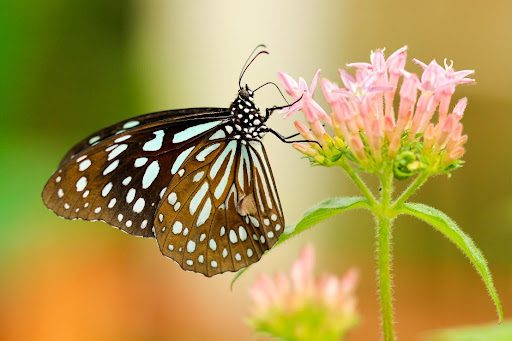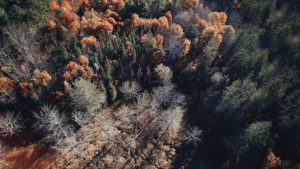While this doesn’t matter much for timber production (our clients’ most frequent focus), pollination is an important consideration for all of us as a species, as it affects the biodiversity, ecological health, food supply, and beauty of our world every day. The contribution of mammals, insects, and birds to food production is often overlooked. They contribute to the plant population’s diversity, abundance, and quality through pollination. Most wild plants depend on pollinators for seeding and regeneration of the harvested forests.
70% of food crops globally rely on animal pollination for quality and yield improvement, whereas birds, insects, and animals pollinate 88% of global wild plants. Butterflies, wild bees, bats, moths, and hoverflies are some of the names.
While we understand the role of these animals, birds, and insects in pollinating trees, we want to raise awareness about the two pollination methods.
 What’s Pollination?
What’s Pollination?
Pollination is a symbiotic process where pollen is transferred from one plant, ovule, stigma, or flower to the other for fertilization. This process takes place in two ways:
Self-Pollination
As the name suggests, the stamen directly sheds pollen grains from the anther onto its stigma.
Cross-Pollination
Cross-pollination is an indirect method of pollinating trees and plants in that a third party, the pollinator, transfers the pollen grains from one tree or plant to another while they draw the nectar from the plant.
Self-Pollinating Trees vs. Cross-Pollinating Trees
Pollinating trees is key to ensuring the quality, quantity, and diversity of trees and plants. However, what difference lies in these pollination methods, and how can we tie pollination to the regeneration and seeding of forests? Let’s understand.
Method of Transfer
The major difference in both methods lies in their method of transfer. While self-pollinating trees do it directly by shedding pollen grains onto their stigma, cross-pollinating trees do it with the help of animals, insects, birds, and even water and wind. Hence, cross-pollination is an indirect method, whereas self-pollination is a direct method of pollinating trees.
Differences in Plant
Self-pollination occurs in smaller flowers, whereas cross-pollination occurs in plants and trees with long pistils and stamens, bright colored petals, nectar, and scent. The number of pollen is also smaller in self-pollinating trees, whereas cross-pollinating trees have large numbers of pollen grains.
Self-pollination occurs in plants with perfect flowers. On the other hand, cross-pollination can easily take place in both perfect and imperfect flowers. The difference also lies in their type of reproduction. For instance, cross-pollinating trees have allogamy reproduction, while self-pollinating trees have geitonogamy and autogamy reproduction.
Process Output
The results of each method also vary. For instance, self-pollinating trees have a uniform progeny in that the next generation of plants have similar properties and lower diversity. As a result, they’re susceptible to diseases. However, these plants don’t need to use their energy to attract pollinators. They can easily expend to find suitable pollinators.
Contrary to that, cross-pollinating trees are diverse because the variety of species is multi folds. Cross-pollination combines genetic information of multiple plants or trees. However, such plants or trees heavily rely on pollinators to ensure diversity.
Self-Pollinating Trees
Plants with smaller flowers use self-pollination–for instance, peanuts, oats, rice, apricots, peaches, orchids, peas, wheat, sunflowers, barley, potatoes, and tomatoes.
Cross-Pollinating Trees
Cross-pollinating plants that use insects include plums, apples, runner beans, tulips, grapes, raspberries, strawberries, pears, blackberries, daffodils, pumpkins, and lavender. Others that use wind include goat’s beard, maple trees, catkins, grasses, and dandelions.
The Benefits of Cross-Pollination
As we’ve established above, most global crops rely on pollinators for seeding and regeneration. Following are some of the benefits of cross-pollination:
- Forests incorporate a tightly knit ecosystem where the survival of pollinators and pollinating trees depend on each other. It’s co-dependence in that pollinators rely on plants and trees for food and shelter, whereas the trees rely on the services of animals, insects, and birds for natural regeneration.
- Plants produced through cross-pollination are more diverse. Hence, they’re resilient to diseases due to their genetic diversity.
- Animal-pollinated plants, crops, and trees achieve higher yields and fruit sets.
- In tropical countries, non-wood products such as palm fruits, latex, and nuts are an essential source of income for the local economy. Pollinators play a pivotal role in assuring the reproduction of these products.
Present Challenges in Pollinating Trees
Despite the significant role of pollinators in food security and regeneration, there isn’t much attention paid to protecting them. Climate change is one of the main challenges that has aggravated the position of pollinators.
Rising temperatures and fluctuations affect animals’ habitats. This directly affects plants that rely on the planet’s pollinators because of their delicate relationship. For instance, it can significantly affect fruit maturation, leaf unfolding, and flowering. Climate change is also said to cause a drop in crop, plant, and tree yields.
Intensive agriculture and habitat fragmentation are two main culprits that have triggered the domino effect. These management practices have serious repercussions for pollinators and food security and compromise the diversity of plants. Ultimately, it’ll reduce their resilience against threats like pathogens and climate change.
While pollination is comparatively a small concern in New Hampshire and Maine forests, pollinating trees is key to assuring the regeneration of trees and maintaining their overall health. At Tall Pines Forest Management, we can help you develop an efficient and effective regeneration strategy as a part of every forest management plan. Reach out to us today!


 What’s Pollination?
What’s Pollination?
0 Comments